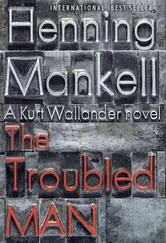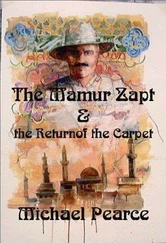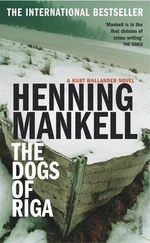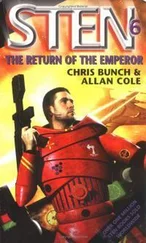He passed through Stenstavik and continued towards Sveg. It was getting light now, and the wooded ridges surrounding him on all sides were acquiring a shade of blue. His mind turned to the preliminary report he’d received from the coroner’s office in Umeå where pathologists had been examining the body. It explained how the wounds had been inflicted, of course, but hadn’t provided Larsson with any clues as to where this savage attack might have come from, nor why. The pathologist described in detail the violence inflicted on Molin. The wounds on his back appeared to have been caused by whiplashes. Because there was no skin left on his back, it was only when they discovered a fragment of the lash that they realized what had happened. A microscopic examination revealed that the whip had been made from the hide of an animal. Just what animal they were unable to say, as it did not correspond with any animal in Sweden. It was highly probable that the injuries to the soles of Molin’s feet had been caused by the same instrument. He had not been beaten in the face: the scrape marks indicated that he had been dragged facedown over the ground. The wounds were full of soil. The doctor was able to state that on the basis of bruises on the victim’s neck, it was clear that an attempt had been made to strangle him. An attempt was a wording that should be taken literally, the report stressed. Molin had not been choked to death. Nor did he die from the residue of tear gas found in his eyes, throat, and lungs. Molin had died from exhaustion. He had, literally, had the life whipped out of him.
Larsson pulled onto the side of the road and stopped. He switched off the engine, got out of the car, and waited until a truck had driven past on its way up north. Then he unzipped his fly and peed. Of all the joys that life had to offer, peeing at the side of the road was the best. He got back into the car, but before starting the engine, he tried to think objectively about what he now knew concerning the death of Molin. Slowly and deliberately, he tried to let everything he’d seen and read in various reports filter through his mind and find their own way into appropriate pigeonholes. Something among that information might provide a lead. They had found no trace of a motive. Nevertheless, it was obvious that Molin had been subjected to protracted and savage violence. Frenzy, fury, Larsson thought. That’s what it’s all about. Perhaps this furious frenzy is in fact the motive. Fury and a thirst for vengeance.
There was something else that suggested he might be on the right track. Everything gave the impression of having been carefully planned. The guard dog had had its throat cut. The murderer had been equipped with whips and tear gas cartridges. That can’t have been coincidental. The fury must have been an outburst within the framework of a meticulous plan.
Fury, thought Larsson. Fury and vengeance. A plan. That means that whoever killed Molin had most probably been to the house before, possibly on several occasions. Somebody should have noticed strangers hanging around in the vicinity. Or maybe the opposite applied: nobody had noticed anything. Which would mean that the murderer, or murderers, would have been friends of Molin.
But Molin didn’t have any friends. That was something Mrs. Tunberg had been very clear about. Molin didn’t have a social life. He had been a recluse.
Larsson went over what had happened one more time. He had the feeling that the attacker had been on his own. Somebody had turned up at the isolated dwelling, armed with a whip made from an unidentified animal hide and a tear gas pistol. Molin had been killed with ruthless and planned sadism, and the body had been abandoned naked at the edge of the forest.
The question was: had Molin simply been murdered? Or was it an execution?
Expert reinforcements would have to be brought in. This wasn’t just a run-of-the-mill murder case. Larsson was increasingly persuaded that they were faced with an execution.
It was 9:40 by the time Larsson drove up to Molin’s house. The crime scene tape was still in place, but there was no sign of a police vehicle. Larsson got out of his car. There was quite a wind blowing now. The swishing sound from the forest imposed itself upon the autumn morning. Larsson stood quite still and slowly looked around. The forensic unit had found traces of a car parked exactly where he was standing now: the tracks didn’t correspond to Molin’s ancient Volvo. Every time Larsson came to the scene of the murder, he tried to imagine exactly what had happened. Who had clambered out of this unknown car? And when? It must have been during the night. The pathologists still hadn’t been able to establish the precise time of death. Even so, the writer of the preliminary report had hinted in carefully chosen words that the assault could well have taken place over an extended period of time. He couldn’t say how many strokes of the whip Molin had received, but the beating — with pauses — might well have gone on for several hours.
Larsson rehearsed yet again in his head the thoughts that had occurred to him during the drive out from Östersund.
Fury, and the thirst for revenge. A solitary murderer. Everything meticulously planned. No killing on the spur of the moment.
The phone rang. He started. He still hadn’t gotten used to the fact that he could be reached by telephone anywhere, even in the middle of the forest. He retrieved his cell phone from his jacket pocket and answered.
“Giuseppe Larsson.”
He’d lost count of the number of times he’d cursed his mother for giving him his first name after hearing an Italian crooner at a concert in Östersund’s People’s Park one summer night as a young girl. He’d been teased ruthlessly throughout his school years, and now, every time anybody called him and he said his name, whoever was at the other end of the line always paused to consider.
“Giuseppe Larsson?”
“Speaking.”
He listened. The man at the other end said his name was Stefan Lindman, and that he was a police officer. He was calling from Borås. Lindman went on to say that he’d worked with Molin and was curious about what had happened. Larsson said he’d call him back. He’d had cases when reporters had pretended to be police officers, and he didn’t want to run that risk again. Lindman said he appreciated that. Larsson couldn’t find a pencil, and instead marked the phone number in the gravel with the toe of his shoe. He called back, and Lindman answered. He might be a reporter nevertheless, of course. What he should do was call the station in Borås and ask if they had an officer by the name of Stefan Lindman. Even so, the way the man at the other end of the line expressed himself suggested to Larsson that he was telling the truth, and he tried to answer Lindman’s questions. But it wasn’t easy to do so on the phone. In any case, reception was not good, and he could hear the forensic team approaching.
“I’ve got your number,” Larsson said. “And you can get hold of me at this number or at the station in Östersund. Meanwhile, is there any thing you can tell me ? Did Molin feel he was under threat? Any information could be of value. We don’t have much to go on. No witnesses, no apparent motive. Nothing at all, really. We’re ready to clutch at any straw.”
He listened to the response without comment. The police crime scene van drove up to the house. Larsson concluded the call, and made the number he’d traced in the gravel more obvious with the toe of his shoe.
The policeman who’d phoned from Borås had said something important. Molin had been scared. He had never explained why he was uneasy, but Lindman had no doubt. Molin had been scared all the time, wherever he had been, whatever he had done.
Читать дальше












